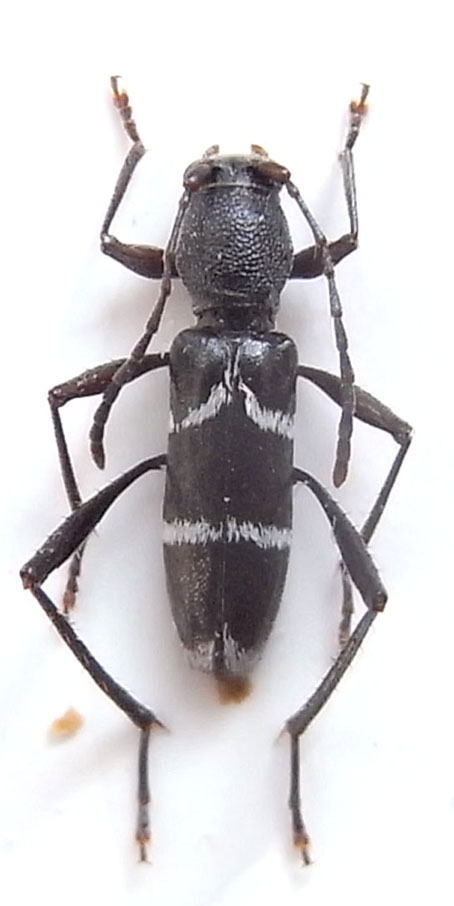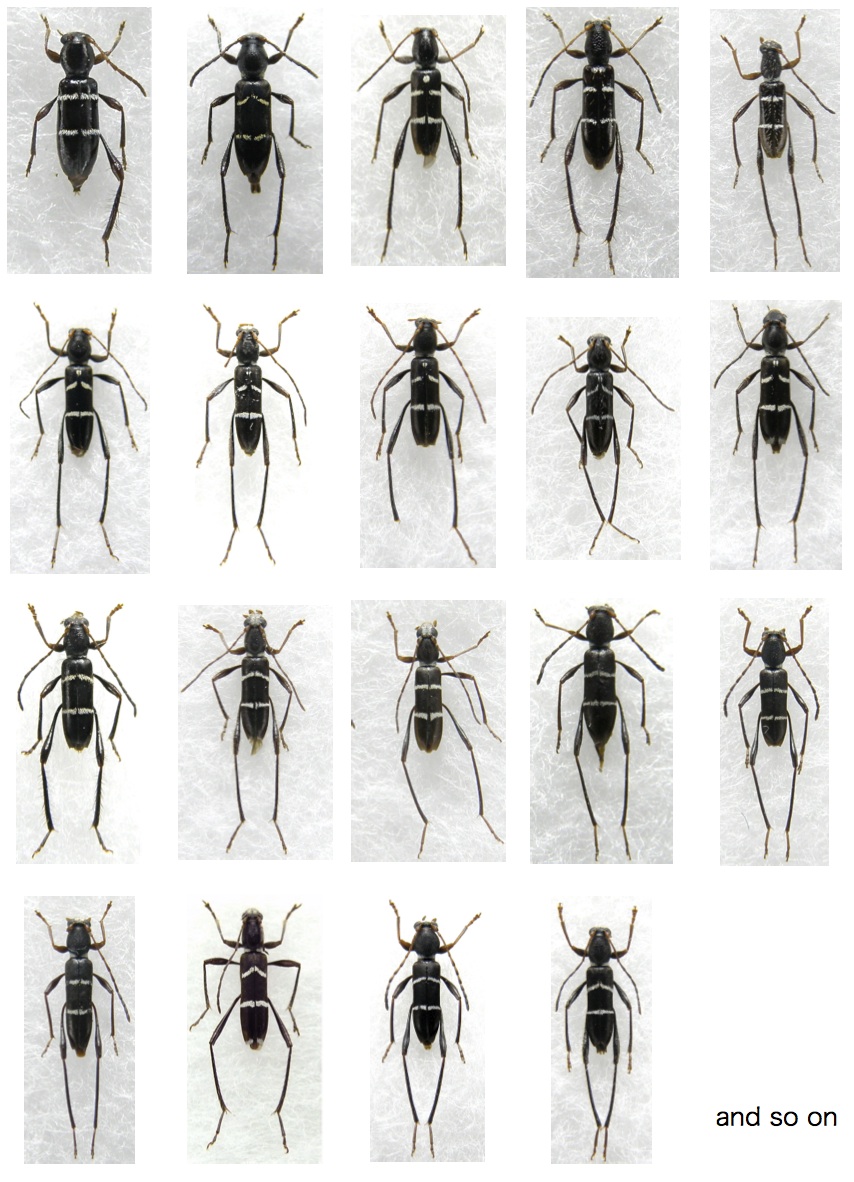| Author |
 Topic Topic  |
|
|
Xavier
Scientific Collaborator
    
France
12338 Posts |
 Posted - 17/02/2013 : 14:16:28 Posted - 17/02/2013 : 14:16:28



|

4 mm (3 ex.). Hua phan, nord-est Laos.
Les antennes me semblent longues pour le genre Clytus, le premier tarse trop court pour en faire un Perissus ... je ne vois pas. |
Edited by - Xavier on 30/01/2016 18:53:09 |
|
|
Francesco
Forum Admin
    
Luxembourg
9511 Posts |
 Posted - 17/02/2013 : 20:00:41 Posted - 17/02/2013 : 20:00:41




|
Il me semble une Rhaphuma du groupe diminuta.
Récemment il est sortie un article ŕ propos; il faut que je le retrouve... |
 |
|
|
Max
Member Rosalia
  
Russia
731 Posts |
 Posted - 17/02/2013 : 20:49:11 Posted - 17/02/2013 : 20:49:11



|
| Or Amamiclytus? Consimilar, pretty well... |
 |
|
|
Xavier
Scientific Collaborator
    
France
12338 Posts |
 Posted - 17/02/2013 : 21:51:11 Posted - 17/02/2013 : 21:51:11



|
| Thanks Max, but after checking, none of Amamiclytus species (described by Holschuh) from this area. |
 |
|
|
Beckey
Member Rosalia
  
Japan
553 Posts |
 Posted - 20/02/2013 : 16:27:14 Posted - 20/02/2013 : 16:27:14



|
It might belong to the genus Amamiclytus in my opinion.
The genus is distinguishable from Rhaphuma by rather widely separated antennal insertions, long, erect, pale hairs on the middle and hind tibiae (Niisato 2011).
By the way, I collected over 140 Amamiclytus beetles by myself in Malay Peninsula where there is no record as far as I know.
These beetles might come up around 20 species almost of all undescribed.
So, I don't surprise if many Amamiclytus species distribute in the area.

289.86#160;KB |
Edited by - Beckey on 20/02/2013 16:36:46 |
 |
|
|
Xavier
Scientific Collaborator
    
France
12338 Posts |
 Posted - 20/02/2013 : 17:09:30 Posted - 20/02/2013 : 17:09:30



|
Thank you.
I just said that my species is not one of the 4 Amamiclytus species described by Holzschuh from this area. After looking your pictures, I understand the problem  . . |
Edited by - Xavier on 20/02/2013 17:31:46 |
 |
|
| |
 Topic Topic  |
|


